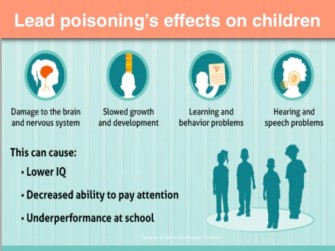 On May 31, Our Kitchen Table attended a hearing at the Kent County Health Department to comment on the Child Lead Poisoning Elimination Board report, “Roadmap to Eliminating Child Lead Exposure.” (See OKT’s comments below.)
On May 31, Our Kitchen Table attended a hearing at the Kent County Health Department to comment on the Child Lead Poisoning Elimination Board report, “Roadmap to Eliminating Child Lead Exposure.” (See OKT’s comments below.)
Governor Rick Snyder established the board through executive order because “because “…there exists a need in state government for a coordinated effort to design a long term strategy for eliminating child lead poisoning in the state of Michigan.” The board consists of medical, environmental, and child education experts, academics, civic leaders, and state department representatives.
The Michigan Department of Health and Human Services (MDHHS) recently awarded OKT a $75, 000 Child Lead Exposure Elimination Innovation Grant. Find OKT’s comments on the report below.
The members of the board present were genuinely and passionately concerned about childhood lead poisoning. The CLEEC_Action_Plan they have developed is a great framework for eliminating lead poisoning. It includes recommendations for better testing of home and daycare environments, having all children tested for lead poisoning, testing pregnant women at-risk for lead poisoning, and getting the medical community to be more vigilant about lead poisoning. In short, the plan seeks to eliminate the deep root causes of lead poisoning so children won’t be exposed in the first place.
This good plan faces one huge obstacle: funding. Those in the room last night suggested that to create lead-safe communities state-wide would cost at least $1 billion. In addition, because of potential costs, groups like the Rental Property Owners Association (RPOA) are actively fighting against enhanced requirements for lead testing–and are quick to blame tenants for lead hazards. While Snyder approved funding the creation of the board, he has not championed funding to implement the action plan. And, when fall elections usher in different elected officials, there’s a possibility that the whole board could be scrapped.
Our Kitchen Table Public Comment on Childhood Lead Poisoning
On behalf of Our Kitchen Table and its executive director, Lisa Oliver-King, I thank you for your work on eliminating childhood lead poisoning. As a grass-roots, nonprofit working for environmental justice through the lens of food justice, OKT would like to state that:
-
While the report discloses that children living in neighborhoods experiencing income-challenges and older housing stock are more likely to experience lead poisoning, it does not relate that children of color are more likely to experience lead poisoning. In fact, African American children are five times more likely to be poisoned by lead than white children— and Latinx children more than twice as likely as white children. Studies conducted the National Institutes of Health right here in Michigan determined that that, in utero, African American babies are more than twice as likely to be lead poisoned. As one of the outcomes of prenatal lead poisoning is premature birth, lead poisoning no doubt contributes to African American infant mortality rates being twice that of white infant mortality rates—right here in Kent County. In addition, the report speaks to higher incarceration rates among those who experienced lead poisoning as children. One could deduce that lead poisoning is also partly responsible for the African Americans having higher rates of incarceration. It’s more than the school to prison pipeline. It’s also a poisoned to prison pipeline. Thus, childhood lead poisoning in Michigan is not just a public health concern but also a justice and civil rights issue. The high rates of lead poisoning among African American children reveal yet another facet of institutional racism.
-
The report acknowledges soil contamination as contributing to lead poisoning. Through our food gardening work in Grand Rapids 49507, a zip code reporting one of the highest number of lead poisoned children in the state, OKT has discovered that housing stock is not the only contributor to soil contamination. More than a century ago, the area had orchards. Lead was an ingredient in pesticides then used, as well as arsenic. Therefore, sampling soil near built structures is not enough. No doubt, other means of lead contamination have impacted soil in other regions in the state. Housing stock should not be the only cause considered.
-
The report does mention nutrition and micro-nutrient supplementation as a means to treat lead poisoned children. Studies have shown that certain foods help absorb lead in the body: dark green vegetables and leafy greens, legumes, dried fruits, nuts, seeds, whole grains, dark green vegetables, grapefruit and sweet red pepper. In other words, a healthy, whole foods diet with a huge emphasis on fresh local produce. As the neighborhoods experiencing high childhood lead exposure also experience food apartheid, OKT sees lead poisoning as a food justice issue. If these children — and their mothers — had access to these healthy foods prior to lead exposure, no doubt they would suffer fewer repercussions. The lack of access to healthy foods also bequeaths these same children with a host of other health problems: obesity, diabetes, heart disease, asthma, and behavior issues that Impact school performance.